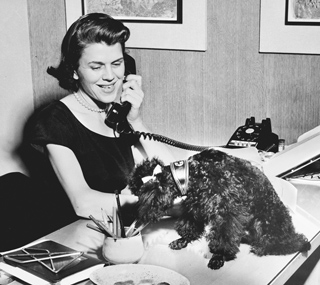Breaking the Rules - Page 7
 |
|
|
Throughout his career, Quincy Jones understood the importance of publicity. In 1953, when he designed a home for U.S. Gypsum Company's model Research Village project in Illinois, he accepted a $20 wager from U.S. Gypsum's publicity manager "that publicity resulting from our Research Village program would be a greater benefit to you than all other publicity you have received in your architectural career."
Jones lost the bet—which means of course that he won.
When Jones built his own house in the Brentwood Hills, he wrote Progressive Architecture about featuring it in an article. "I am not trying to kid anyone," he wrote. "I would like to get whatever publicity breaks I can on the house and, as well, naturally, any price breaks I can get on products [for the house]."
Several of the firms Elaine Jones represented, including Arcadia and Herman Miller, manufactured products that Jones often specified in his projects. He also designed a large campus for Herman Miller.
Elaine played a major role in fostering Quincy's reputation, planting stories in the architectural press, including a story about his designs for Eichler Homes, in Arts & Architecture.
Her work on Jones' behalf continued long after his death, at age 66 in 1979. In 1983, she helped edit a book-length review of the work of Quincy and his partners for the magazine Process Architecture.
After Quincy died, organizing his archive became "an all-consuming job for her," Travers says.
The result has been the creation of one of the most thorough archives of a modern architect that its curator at UCLA, Simon Elliott, has ever seen—thousands of containers filled with drawings, plans, photos, and more.
Elaine Sewell, who grew up in Kansas and Oregon, graduated from Oregon State and did graduate work in communications at Michigan State University. Moving to Los Angeles in 1948, she ran a PR firm devoted to modern design and quickly became part of the scene.
"She moved in circles of the most prominent West Coast architects and designers and artists," Susan Hinerfeld recalls.
"Elaine felt that Quincy was a great architect. She wanted for him the recognition for the wonderful things he had done. She saw other architects who failed to get the fame they deserve. They had no one pushing them forward."




